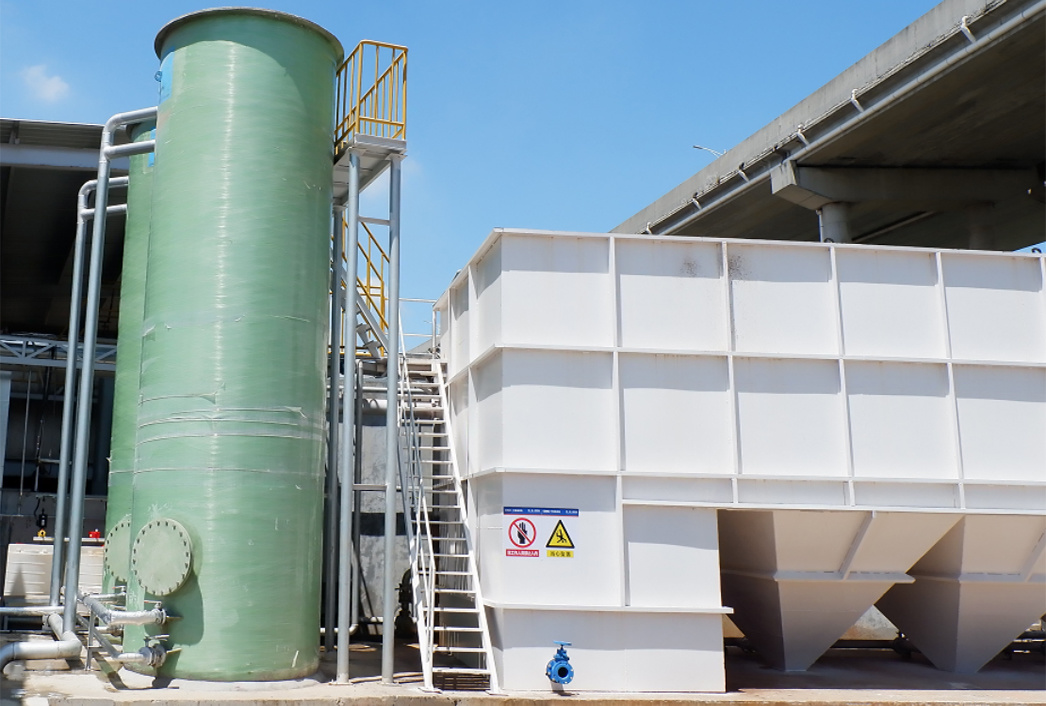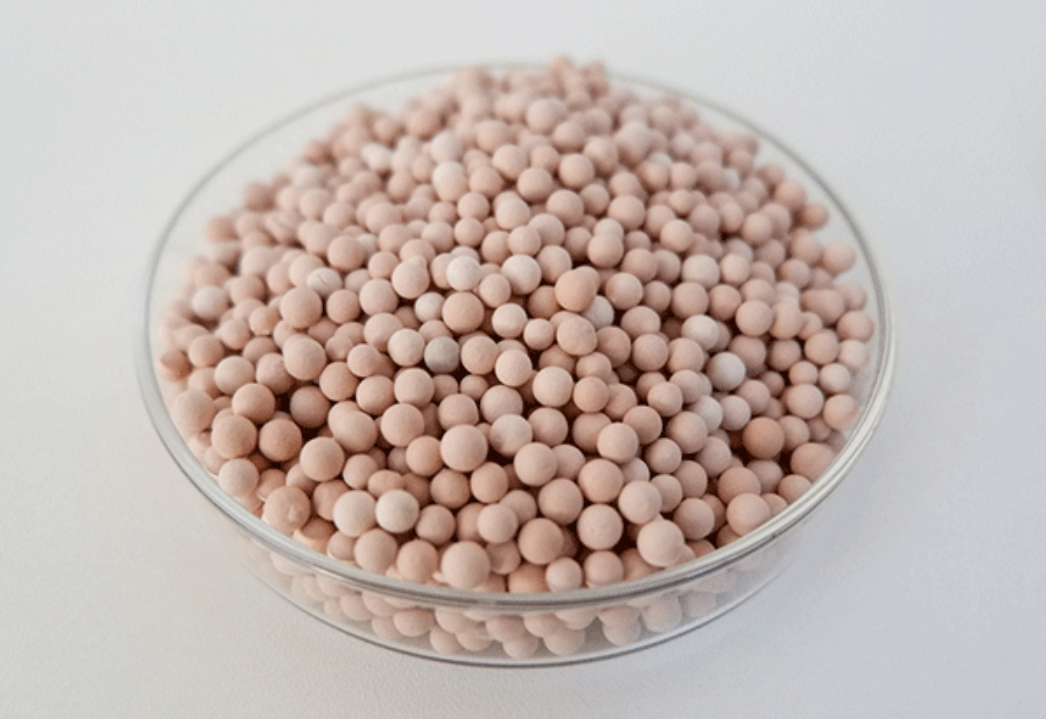Introduction of FCM catalytic autolysis technology and SAO3 ozone catalytic oxidation technology introduction
Introduction of FCM catalytic autolysis technology and SAO3 ozone catalytic oxidation technology
Keywords:
Introduction of FCM catalytic autolysis technology and SAO3 ozone catalytic oxidation technology introduction

Hotline:
相关内容
Classification:
- Description
-
- 商品名称: Introduction of FCM catalytic autolysis technology and SAO3 ozone catalytic oxidation technology introduction
Introduction of FCM catalytic autolysis technology and SAO3 ozone catalytic oxidation technology
Introduction of FCM catalytic autolysis technology
Catalytic autolysis (iron-carbon microelectrolysis) is based on the primary cell reaction in electrochemistry. Under the condition of wastewater PH=3~4, when iron and carbon are immersed in the electrolyte solution, an electrode potential difference of 1.2V exists between Fe and C, thus forming a system of numerous microcells, which constitute an electric field in their action space. The new ecological divalent iron ions produced by the anodic reaction have strong reducing ability, which can reduce some organic matter, and also can open the double bonds of some unsaturated groups (such as carboxyl-COOH, azo-N=N-), so that some of the hard-to-degrade cyclic and long-chain organic matter decomposed into easy to biodegrade small molecules of organic matter and improve the biochemical properties. In addition, divalent and trivalent iron ions are good flocculants, especially the newborn divalent iron ions have higher adsorption-flocculation activity. Adjusting the pH of wastewater can make the iron ions turn into flocculent precipitation of hydroxide and adsorb the suspended or colloidal micro particles and organic macromolecules in wastewater, which can further reduce the color of wastewater and remove some organic pollutants to purify wastewater. The cathodic reaction produces a large amount of new ecological [H] and [O], and under the acidic condition, all these active components can have redox reactions with pollutants in the wastewater and make ring and long-chain organic substances undergo ring-opening and chain-breaking reactions to improve the biochemical properties of wastewater.
Catalytic auto-electrolysis is an ideal process for treating high concentration, difficult to degrade and difficult to biochemical organic wastewater. Its working principle is based on the combined effect of electrochemical oxidation-reduction reaction and flocculation and precipitation, and this method has the advantages of wide application, good treatment effect, low cost, easy operation and maintenance, and no need to consume electric power resources.
FCM catalytic self-electrolysis process, a material to achieve simultaneous oxidation, reduction, flocculation adsorption, precipitation, etc., on COD, ammonia nitrogen, cyanide, phenol, organic sulfide, etc. have significant removal effect, high removal efficiency, low material consumption, low operating costs. At the same time, the consumption of chemicals is greatly reduced, and the amount of sludge produced is also less, and the cost of sludge disposal is low. This process is used for the treatment of hard-to-degrade toxic industrial wastewater, which can not only remove toxicity and significantly reduce COD, but also greatly improve the biochemical properties of the wastewater.
一、FCM-IV innovative catalytic autoelectrolytic materials have the following proven capabilities:
1、Ring opening, chain breaking and improving biochemical properties: organic substances participate in the reduction reaction of cathode, so that the functional groups break the chain and degrade, the COD decreases and the biochemical properties (B/C value) of wastewater increases, meanwhile, when the double bonds or other conjugated bonds of organic substances are broken, the color-emitting groups are reduced and the color of wastewater is lowered.
2、Removal of heteroatoms (such as sulfur, phosphorus, halogen, etc.): organic substances containing heteroatoms (such as S) after ring opening, chain breaking and further reactions, the heteroatoms are transformed into inorganic substances (such as hydrogen sulfide, sodium sulfide, etc.), which eventually react with iron to produce iron sulfide precipitates to be removed,Fe2++S2-→FeS↓。
3、∙OH is generated to oxidize ammonia nitrogen to form N2, which is effective in removing ammonia nitrogen, while the reduction effect of zero-valent iron can generate nitrogen gas by reduction reaction with NO2-, NO3- and other nitrogen and oxygen ions, thus removing total nitrogen.。
MOx(·OH)6+2NH3→N2↑+6H2O+MOx
6·OH+2NH3→N2↑+6H2
4Ar-NO2+9Fe+4H2O——Ar-NH2+3Fe3O4↓
4、Heavy metal ions are removed: for example, copper ions, etc. After reacting with the self-electrolytic material, copper is replaced and retained on the filler, which is separated from the wastewater and purified. Hexavalent chromium gets electrons under acidic conditions, and is reduced to trivalent chromium by the treatment of self-electrolytic materials, and the effluent is adjusted to pH 7~8 to generate precipitation for separation and removal。
Cu2++Fe→Cu↓+Fe2+
Cu2++Fe2+→Cu↓+Fe3+
Fe3++3OH-→Fe(OH)3↓
Cr2O72-+6Fe2++14H+→2Cr3++6Fe3++7H2O
Cr3++3OH-→Cr(OH)3↓
5、Breaking emulsion and removing oil: the colloidal particles and tiny dispersed pollutants of wastewater are subjected to electric field, producing electrophoresis phenomenon, moving to the electrode of opposite charge and gathering on the electrode to form aggregates (such as tiny oil particles gathering into oil droplets floating) and separating from water, the oil content of the effluent can be reduced to below 1mg/L。
6、Coagulation: The new ecological Fe3+ and Fe2+ generated after the anodic reaction are neutralized by alkali (lime) to form new ecological Fe(OH)2 and Fe(OH)3, which have strong adsorption capacity and can adsorb suspended particles, some colored substances and some insoluble materials produced by micro-electrolysis in the wastewater, flocculate into clusters and then precipitate, playing a better flocculation effect。
7、Additive chain-breaking to improve biochemical properties: The hydrogen atoms generated by the cathode, with strong additive reduction effect, can react with long-chain and cyclic macromolecules, break the chain of organic matter and decompose it to improve the biochemical properties of wastewater.
二、Main features and technical advantages of FCM-IV innovative catalytic autocatalytic material
1、Specially developed and produced for difficult wastewater treatment
FCM-IV catalytic self-electrolytic material is the latest generation of micro-electrolytic environmental protection filler (Patent No. ZL200910198628.6), with regular spherical appearance and particle size of Φ12~18mm, which has strong reaction activity with wastewater and good treatment effect.
2、
Low pile density with well-developed micropores
The stack density can reach 1.2~1.4g/cm3, with well-developed micropores, large specific surface area and strong reaction activity; with high temperature magnetization structure and micropore activation technology, the surface zeta potential is high, which can greatly reduce the activation energy of pollutant ring opening, chain breaking and degradation reaction and improve the reaction rate and purification efficiency.
3、High mass transfer efficiency of regular spherical structure, more complete reaction, easy to backwash
With regular spherical structure, the filling gap is more uniform, the contact between wastewater and particle surface is more adequate, the mass transfer efficiency is higher and the reaction is more thorough; with low density, it is easier to backwash regularly and more convenient to use and manage.
4、Uniform internal distribution, higher efficiency of electrochemical reaction
The production and processing adopts nano-level raw materials mixed into balls, iron-carbon-M elements are evenly mixed, the number of positive and negative electrode pairs is more huge, the electron transfer resistance during the discharge reaction is smaller, the reaction is more efficient, the decontamination, detoxification and degradation ability is stronger, and the purification efficiency is higher.
5、No passivation, no slating, no blockage
The organic combination of electrolytic positive and negative electrode materials and catalytic elements can form numerous positive and negative electrode pairs in a single particle at the same time, so that the discharge reaction is always unobstructed, the spacing between electrodes is short, and the discharge resistance is small; because the integration of positive and negative electrode pairs can be backwashed, the formation of dense oxide and passivation on the surface of the self-electrolytic material can be fundamentally avoided, and the effect of non-passivation, non-slabbing and non-clogging can be truly realized, and long-term Maintain stable activity.
6、Low consumption and low operating cost
With strong catalytic reaction activity and high efficiency of discharge reaction, the consumption of self-electrolysis material for removing unit COD is low, and the amount of sludge produced is small, so the treatment cost is low.
7、Stable pretreatment (detoxification) to ensure efficient operation of subsequent biochemical
The pretreatment processes such as dosing and advanced oxidation often lag behind in controlling the reaction conditions when the water quality fluctuates, which cannot fully guarantee the effluent quality and easily cause destructive effects on the subsequent biochemical treatment (this is also the fundamental reason why the biochemical system of high concentration toxic industrial wastewater is difficult to operate stably and efficiently in the past). It can fully ensure the biochemical quality of effluent to meet the requirements of subsequent biochemical treatment, maintain the smooth and efficient operation of biochemical treatment unit, and finally ensure the effluent meets the standards.
SAO3 Ozone Catalytic Oxidation Technology Introduction
Ozone oxidation is selective, and the oxidation products are often small molecules of carboxylic acids, ketones and aldehydes, making it difficult to completely degrade organic substances into CO2, H2O or other inorganic substances. It combines the strong oxidation property of ozone with the enrichment and catalytic activity of catalyst, which can solve a series of problems such as low ozone treatment efficiency, low ozone utilization rate and high operating cost more effectively.
一、Technology Principle
1、Surface enrichment: SAO3-II catalyst has a large specific surface area and strong enrichment ability. When the wastewater comes into contact with the catalyst, the residual organic matter in the water is quickly enriched on the catalyst surface and oxidized rapidly in contact with ozone, which improves the chance of contact between O3 and organic matter, resulting in faster degradation of organic impurities in the wastewater, higher removal rate and higher ozone utilization rate.
2、Catalytic activity: The catalyst surface is densely covered with high-energy active substances and active dots, which greatly reduces the activation energy of organic matter chain-breaking degradation reaction and rapidly degrades under the action of ozone. On the other hand, ozone molecules and water are easy to produce highly active hydroxyl radicals (∙OH) under the action of catalyst active substances, and the newborn carboxyl radicals are especially active and have stronger oxidation capacity, thus improving oxidation reaction activity and O3 utilization rate, increasing COD removal rate and reducing system operation cost.
3、Surface enrichment and activation synergy: The catalyst can not only adsorb organic pollutants in water efficiently, but also catalyze the activation of ozone molecules to produce a large number of highly active hydroxyl radicals (∙OH), while significantly reducing the activation energy of organic degradation, realizing the synergy of organic pollutant adsorption and oxidant activation, and achieving better catalytic ozone oxidation effect.
二、SAO3 ozone catalytic oxidation coupling technology advantages
SAO3-II series multiphase catalysts use a variety of high-efficiency rare-earth oxides and rare-earth monomers as active catalytic materials, and adopt the latest three-dimensional structure technology, sintering under high temperature conditions to improve the number of micropores and uniformity of distribution, to obtain a higher specific surface area and more catalytic activity points, maximizing the ozone oxidation efficiency. Under the same ozone dosage, the ozone catalytic oxidation efficiency is increased by 30%~80%, and under the same COD removal rate, a large amount of ozone dosage can be saved, which reduces the operation cost.
1、Organic pollutants are decomposed into CO2 and H2O by forced oxidation of ozone on the surface of special catalyst, no sludge is generated, and no new hazardous waste disposal cost.
2、High ozone utilization rate and low operation cost.
3、High efficiency of wastewater treatment, good quality of effluent, and stable to meet the requirements of the latest drainage standards.
4、Simple process and convenient management.
5、Greatly improve the biochemical properties of wastewater, significantly increase the efficiency of the treatment system without increasing the energy consumption of the original biochemical system, and reduce the overall operating costs of the deep wastewater treatment system.
6、High treatment efficiency, small size of equipment and less land occupation.


Related products
Online message
We will contact you within one working day. Please pay attention to your email.
